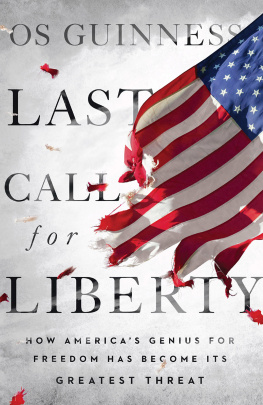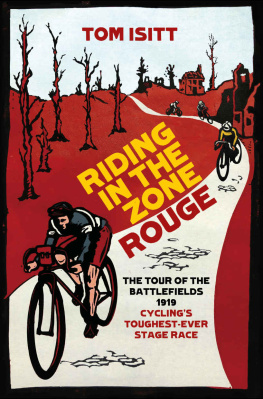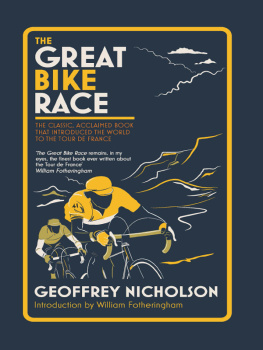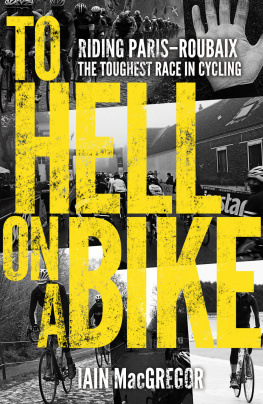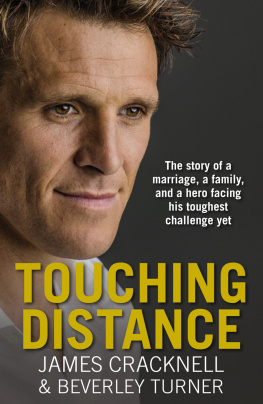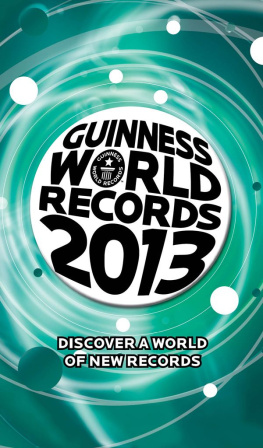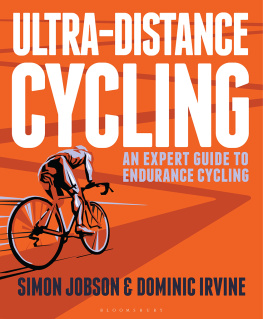ALSO BY RUPERT GUINNESS
A Season for Roche: The Fabulous World of Cycling (with Eddy Merckx)
The Cycling Year (with Phil Liggett and John Wilcockson)
The Cycling Year (with Phil Liggett and John Wilcockson)
The Dean Woods Manual of Cycling (with Dean Woods)
Tales from the Toolbox (with Scott Parr)
The Foreign Legion
Aussie, Aussie, Aussie... Oui, Oui, Oui: Austrailan Cyclists in 100 Years of the Tour de France
What a Ride: An Aussie Pursuit of the Tour de France, Volume I
What a Ride: An Aussie Pursuit of the Tour de France, Volume 2
The Tour: Behind the Scenes of Cadel Evans Tour de France
George Smith: The Biography
The Flying Grocer
We Wont Back Down: On the Road with ORICAGreenEDGE
Power of the Pedal: The Story of Australian Cycling
OVERLANDER: ONE MANS EPIC RACE TO CROSS AUSTRALIA
First published in Australia in 2018 by
Simon & Schuster (Australia) Pty Limited
Suite 19A, Level 1, Building C, 450 Miller Street, Cammeray, NSW 2062
A CBS Company
Sydney New York London Toronto New Delhi
Visit our website at www.simonandschuster.com.au
Rupert Guinness 2018
All rights reserved. No part of this publication may be reproduced, stored in a retrieval system, or transmitted in any form or by any means, electronic, mechanical, photocopying, recording or otherwise, without prior permission of the publisher.

ISBN 978-1-9256-4011-3 (ebook)
Cover design: Christabella Designs
Cover image and internal images as credited: Troy Bailey @troybaileyimages, troybaileydesign@gmail.com
Cover photograph by Troy Bailey
Internal images by Rupert Guinness unless otherwise specified
Typeset by Midland Typesetters, Australia
IN MEMORY OF MIKE HALL
4 JUNE 198131 March 2017
Foreword
BY KRISTOF ALLEGAERT
I have always been in love with cycling my whole life has been woven by the bicycle. When I was young, cycling thirty kilometres was already a big adventure for me, and then I started dreaming about going for rides of 50, 100, 150 and then 200 kilometres.
Over the years, I have seen half of the world by bike. Cycling is the perfect form of travel its fast enough to make progress, yet slow enough to allow you to take in and appreciate the landscape around you. I was into bikepacking before it became more widely known, and Ive had the time of my life because of it. Over the years I discovered that my strength was being alone, cycling by myself. There was a start and a finish, but I always knew that in between I was free just me, my bike, and the elements of nature, weather and the terrain.
But it wasnt until I was almost 40 that I took part in a formal bike marathon. My first was the Transcontinental Race across Europe in 2013, an ultra-endurance race over distances between 3,200 and 4,000 kilometres that can take between 7 and 10 days to finish. Before then Id never thought of competing in traditional road races, even though Im from Kortrijk in Flanders, Belgium, which is the heartland of one-day professional classics like the Tour of Flanders.
When I started the Transcontinental Race, I really didnt know what to expect, but everything worked out the way I had planned and hoped for. And so began a new chapter of my life, of cycling at a whole new level.
After hearing so many amazing stories about cycling in Australia and especially of crossing the fabled desert of the Nullarbor Plain a part of me was really excited about racing in the first Indian Pacific Wheel Race but another part was scared and apprehensive.
How would I feel about this as a race? With minimal sleep and limited food and refreshment available, combined with the harsh sun, what would be the impact on your mind and body, especially if youre coming from a European winter?
It was only three months before what quickly became known as the IndiPac that I committed to being at the start line in Fremantle, Western Australia on 18 March 2017, and racing it. This meant I had to do some big rides at home in Belgium in the cold dark days of winter. Would I be ready? I had also never been to Australia before. I expected that so many who had entered would know the Australian roads far better than me, at least local riders. I had no real advantage. There was also such a strong field of competitors, including from overseas, and I knew that the price of any small error would be high.
It was only after the start when riding alone that I began to relax, knowing the only thing I needed to do was follow my first love: riding my bike from early morning till late in the dark.
Of course, I made mistakes in the race. Everyone does. But when I do, I know the challenge is to fall back on my skills and think smart to find a solution. Races like the IndiPac are full of ups and downs, and challenges which no one can be totally prepared for. That will never change, no matter how much experience a rider has whether its me or you. Its not unlike life.
The 2017 IndiPac reminded us all of that, albeit tragically so, but also for so many positive reasons before it ended as it did; as does this behind-the-scenes book, in which Rupert Guinness portrays his first experience of riding in this genre of cycling, and how it not only impacted him, but many others as well.
Welcome to the IndiPac, and also the world of solo, unsupported bikepacking, where cycling is pure adventure.
INTRODUCTION
A COSTLY RIDE
FRIDAY, 31 MARCH 2017
I am feeling great in my mind. A positive glow is warming me from deep within the layers of fatigue I have built over almost two weeks. Arriving in Adelaide, my spirits are high from the sense of achievement of having cycled 2,830 kilometres, or across a little more than half of Australia, in the inaugural 5,470-kilometre Indian Pacific Wheel Race from the South Mole Lighthouse in Fremantle to the Opera House in Sydney.
Theres still so much further to cycle before I can say mission accomplished. But whatever happens from here, I have ridden further than the first Overlander route cycled by Arthur Richardson, a mining engineer from Port Augusta, South Australia, who worked on the Australian goldfields looking for new strikes. Aged 24 and with just a small repair kit and a water bag, he set off on his bike on 24 November 1896 from the gold mining town of Coolgardie to cross the Nullarbor Plain to Adelaide, a ride which had been deemed by so many as too dangerous. Richardson took 31 days to finish the ride and became the first person to cross the Nullarbor on a bicycle. Later, he famously described the searing desert heat as being 1,000 degrees in the shade.
Incredibly, in a display of decision-making that might be best described as impulsive, it was during this ride and when suffering worst from his sunburn, saddle sores and exhaustion that Richardson started plotting his audacious plan to become the first to ride 18,507 kilometres around Australia, his plan being to start and finish in Perth. He was pushed by the knowledge that a combined trio Frank White and his younger brother Alec, and the wealthy pastoralist and amateur cyclist Donald Mackay were planning to attempt the same feat, but in the opposite direction and with the White brothers starting in Melbourne and Mackay joining them in Brisbane.
Richardsons bid to be the first to circumnavigate Australia by land was audacious in itself. That he pitted himself to beat three others whose plan meant they would help each other added to the audacity of it all. Richardson left Perth on 5 June 1899 and the White brothers from Melbourne on 5 July and he beat them, finishing on 4 February 1900. How Richardson did it, riding out into the unknown on lumpy camel pad tracks, across parched desert plains littered with patches of broken rock and scrappy bush, forging pathways that today are bitumen roads, is simply mind boggling.
Next page

